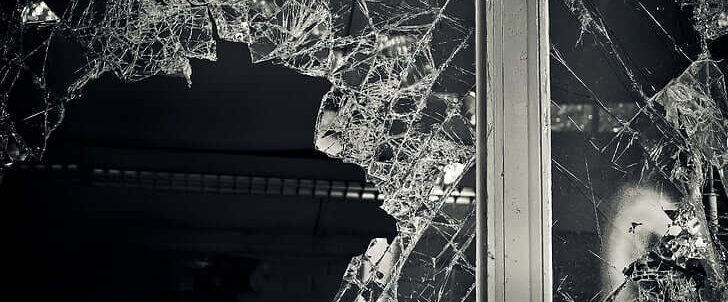When a bomb detonates near a building, it’s not the explosion itself that causes most injuries—it’s the glass fragments that become deadly projectiles. Blast film for windows transforms this dangerous vulnerability into a critical safety feature, potentially saving countless lives during an attack.
Government facilities face unique security challenges that require specialized solutions beyond standard safety measures. Installing professional-grade blast mitigation window film provides an invisible shield that maintains a building’s appearance while dramatically enhancing protection against one of the most overlooked threats in high-risk environments.
Contents
Understanding Blast Mitigation Films
Blast mitigation window films are specialized security products that hold glass together during explosions, preventing dangerous shards from becoming lethal projectiles. These films consist of multiple polyester layers bonded with strong adhesives that attach to the interior surface of windows. When an explosion occurs, the film helps hold broken glass fragments together, significantly reducing injuries from flying glass.
Window Weakness in Blast Scenarios
Windows represent the most vulnerable points in a building’s exterior during an explosion. The pressure wave from a blast can cause glass to shatter instantly, sending sharp fragments flying at dangerous speeds.
This flying glass creates a deadly hazard zone extending many feet from each window, putting occupants at risk even when they’re not near the explosion source.
How Polymeric Layers Absorb Shock
The multi-layered structure of blast films works by distributing impact forces across the entire window surface. When blast pressure hits the glass, the polymeric layers stretch and absorb energy rather than allowing the glass to shatter into dangerous projectiles.
This elastic quality creates a “safety net” effect that keeps glass fragments attached to the film instead of becoming airborne weapons.
Benefits for Government Facilities
Government buildings gain crucial protection advantages when equipped with blast mitigation films. These specialized films provide an invisible shield that maintains the building’s appearance while dramatically improving occupant safety.
The films also offer a cost-effective alternative to complete window replacement with laminated or blast-resistant glass.

Injury Prevention and Liability Reduction
By containing glass fragments during an explosion, blast films significantly reduce the potential for severe lacerations, eye injuries, and other trauma. Government agencies benefit from reduced liability exposure by demonstrating they’ve taken reasonable precautions to protect employees and visitors.
This proactive approach to safety can prevent costly lawsuits following security incidents.
Compliance with Security Standards
Many government facilities must meet specific security requirements established by agencies like the General Services Administration. Professional-grade blast films help buildings achieve compliance with these standards when properly installed.
Certified installation ensures the films perform as expected during emergencies and meet the exact specifications required by security protocols.
Factors in High-Risk Areas
Government buildings in areas with elevated threat levels require specialized security considerations. The risk assessment for these facilities must account for both the likelihood of attack and the potential consequences of window failure during a blast event.
Proximity to Potential Threats
Buildings located near high-traffic areas, transportation hubs, or symbolic targets face increased vulnerability. Government facilities in urban centers require stronger blast protection measures.
The film thickness and attachment systems should be calibrated based on the specific threat profile of each location.
Impact of Anchored Film vs. Daylight Applications
Anchored film systems provide superior protection compared to daylight applications (where film extends only to the visible glass edges). The anchoring process secures the film to the window frame using specialized attachment systems, preventing the entire glass panel from being dislodged during a blast.
This critical difference can determine whether a window becomes a dangerous projectile despite having film applied.
Choosing Reliable Film Technologies
Not all blast mitigation films offer equal protection. Government security professionals should evaluate:
- Film thickness matters: Options range from 4 to 15 mil, with thicker films providing enhanced protection
- Adhesive quality is critical: Superior adhesives ensure the film stays attached during extreme pressure
- Manufacturer reputation counts: Established brands have proven performance in real-world scenarios
Films certified through independent testing provide verified performance data that ensures they’ll function as expected during an actual blast event.
Importance of Professional Installation
Expert installation is crucial for blast film effectiveness. Professional installers ensure proper adhesion, eliminate air bubbles, and correctly implement anchoring systems when required.
Improper installation can compromise the entire system, rendering the protection ineffective when needed most. Professional Window Tinting’s certified technicians understand the critical details that determine whether a film will perform during an emergency.
Warranties and Performance Guarantees
Quality blast films come with manufacturer warranties that protect your investment. These guarantees typically cover film degradation, adhesive failure, and performance issues.
When selecting a provider, verify they offer products from established manufacturers that stand behind their security films with comprehensive warranty coverage.
Protecting Multiple Facility Types
Different government buildings require customized approaches to blast protection based on their function and risk profile:
- Administrative offices often need balanced protection without compromising aesthetics
- Courthouses require heightened security due to potential threats from case participants
- Data centers must protect both personnel and critical information infrastructure
- Law enforcement facilities face unique risks requiring specialized film applications
Coordinating with Existing Security Measures
Blast films work most effectively as part of a comprehensive security strategy. They complement access control systems, surveillance cameras, and structural reinforcements to create layered protection.
Security professionals should integrate window film specifications into their overall facility hardening plans for maximum effectiveness.
Layering Security for Holistic Protection
The most secure government facilities combine multiple protective elements. Blast films can be applied to existing windows or used alongside laminated glass, polycarbonate shields, or ballistic panels for enhanced protection.
This layered approach creates redundant safeguards that maintain protection even if one system is compromised.
Moving Forward with a Safer Solution
Blast mitigation films represent a critical security upgrade for government facilities in high-risk areas. These specialized products transform ordinary windows from vulnerabilities into managed safety features.
By containing glass fragments and reducing the impact of explosions, these films help protect the people who serve in government buildings every day.
For government facility managers in Maryland and Delaware seeking to enhance building security, Professional Window Tinting offers expert consultation and installation services. Our team understands the unique requirements of government security protocols and provides solutions that meet or exceed compliance standards. Get a Free Estimate today to learn how we can help protect your facility with professional-grade blast mitigation films.




